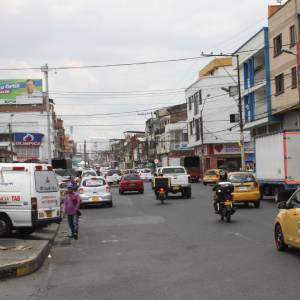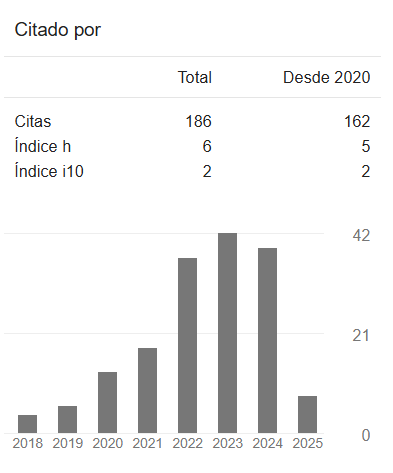Participation structures of the social actor in urban renewal
Pericenter as an opportunity for sustainable urban development
DOI:
https://doi.org/10.35305/23626097v11i21.470Keywords:
pericenter, public policy, urban renewal, participatory urbanism, sustainabilityAbstract
The sustainable development of pericentral areas requires an occupation model encouraging equity. Citizen participation is presented as a key element underpinning it through virtuous relationships among actors. The objective of the article is to highlight the role of present and future owners and residents in the configuration of the social fabric by means of the visualization of forms of association that unable their participation.
The analysis of the physical and social context, in “the southern pericenter of Cali” case study, identifies the characteristics of the community that will drive urban renewal. Detailed knowledge of the context -contrasted with national and international experiences- facilitates the structuring of mechanisms and tools that promote effective and binding participation.
Consolidated social fabric; varied forms of association; and normatively available management, planning and financing instruments are the qualities that support the renewal of pericentral areas as a sustainable, equitable and gradual urban development strategy.
Downloads
Metrics
References
Abramo, P. (2012). La ciudad ‘com-fusa’ mercado y construcción de la infra estructura urbana en las grandes metrópolis latino americanas. Revista Eure, 38, 35-69.
Alexander, C. (1978). Urbanismo y participación - El caso de la Universidad de Oregón. Barcelona, España: Gustavo Gili, S.A.
Aparicio, Á., y Di Nanni, R. (2009). Modelos de Gestión de la Regeneración Urbana. Madrid, España: SEPES.
Banco Interamericano de Desarrollo BID. (2018). Informe de sostenibilidad 2018. Washington, USA: BID.
Blanco, I. (2009). Gobernanza urbana y políticas de regeneración. El caso de Barcelona. Revista Española de ciencia política, 20, 125-146.
Borja, J. (2003). La ciudad conquistada. Barcelona, España: Alianza.
Bustos-Peñafiel, M., y Castrillo-Romón, M. (2020). Luces y sombras de la regeneración urbana: Perspectivas cruzadas desde latinoamérica y europa. Revista INVI, 35, 1-19.
CEPAL. (2016). América Latina y el Caribe. Desafíos, Dilemas y compromisos de una agenda Urbana en común. Santiago de Chile: Naciones Unidas.
Concejo de Santiago de Cali. (21 de septiembre de 2014). Acuerdo N° 0373 de 2014. Plan de Ordenamiento Territorial Santiago de Cali 2014. Cali, Colombia: Concejo Municipal.
Consejo Nacional de Política Económica y Social. CONPES 3819. (2014). Política nacional para consolidar el sistema de ciudades en Colombia. Bogotá, Colombia: Departamento Nacional de Planeación de la República de Colombia.
Delgadillo, V. (2008). Mejoramiento Habitacional en las áreas urbanas centrales de América Latina. Del combate de tugurios a la rehabilitación habitacional progresiva. Revista INVI, 63, 89-120.
Departamento Nacional de Planeación DNP. (2014). Misión sistema de ciudades. Una política nacional para el sistema de ciudades colombiano con visión a largo plazo. Bogotá D.E, Colombia: DNP.
Franco Calderón, Á. M. (2010). Impactos socio espaciales de la renovación urbana. Bogotá, Colombia: Escala.
Inzulza Contardo, J. (2020). Intervenciones urbanas en Latinoamérica con marcas de gentrificación y segregación socioespacial. Revista de Urbanismo, 42, 1-3.
Jacobs, J. (1961). Muerte y vida de las grandes ciudades. Madrid, España: Gráficas Lizarra.
López Morales, E. J., Gasic Klett, I. R., y Meza Corvalan, D. A. (2012). Urbanismo proempresarial en Chile: políticas y planificación de la producción residencial en altura en el pericentro del gran Santiago. Revista INVI, 76, 75-114.
Martínez Vicencio, K. (2018). Impacto de la densificación - vertical e intensiva - sobre la dotación y uso del espacio público bajo el enfoque de la sustentabilidad urbana Comuna de Estación Central, Santiago de Chile. (Tesis para optar al título de magíster en urbanismo). Santiago de Chile, Chile: Universidad de Chile
O. N. U. HABITAT. (2015). 1er Reporte del estado de las ciudades en Colombia. Camino hacia la prosperidad urbana. Bogotá, Colombia: ONU HABITAT.
Orduña-Gañán, M. y Del Caz Enjuto, M. (2013). Movimientos ciudadanos y mejoramiento barrial. Bitácora Urbano Territorial, 23(23), 75-84.
Pérez-López, R. (2019). Producción de la ciudad en tiempos de la globalización. Impactos socioterritoriales de los megaproyectos. Bítácora Urbano Territorial, 29, 13-22.
Rogers, R. (1997). Ciudades para un pequeño planeta. Barcelona, España: Gustavo Gili.
Rojas E., Rodríguez E. y Wegelin, E. (2004). Volver al centro. Washington DC, USA: Banco Interamericano de Desarrollo.
Rueda, S. (1995). Urbanismo ecológico. Madrid España Agencia de ecología urbana.
Santamaría-Hernández, R. (2018). Las políticas urbanas y la cohesión social. Bitácora Urbano Territorial, 28, 151-157.

Published
How to Cite
Issue
Section
License
Copyright (c) 2024 A&P Continuidad

This work is licensed under a Creative Commons Attribution-NonCommercial-ShareAlike 4.0 International License.
Open access policy
A&P Continuidad is a non-profit and open access publication. According to Mexico Declaration on Cultural Policies, the journal distribution is submitted to Creative Commons Attribution-Noncommercial-ShareAlike 4.0 International Public License (CC BY-NC-SA). “Neither the commercial use of the original work nor that of the possible derivative works are allowed. The distribution of derivative works should be submitted to the license regulating the original work. This license is not free.”
A&P Continuidad authorizes the partial or full reproduction of texts and graphs provided that the source is cited. Authors are exclusively responsible for the criteria expressed in the articles which do not necessarily reflect the opinion of the Editorial Committee or that of the Direction Board. The copyright of the published articles pertains to their authors or publishers.
Transfer of rights
The acceptance of an article to be published implies the author’s transfer of rights to the journal. Authors continue to have the right to use the material in future books or publications, approve or veto the republication of their works as well as the rights related to patents or other rights. Transfer of rights form may be downloaded here.





























 This OJS site and its metadata are under a
This OJS site and its metadata are under a 

